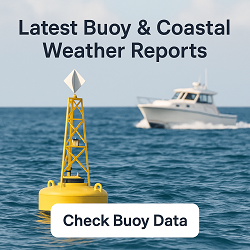Jensen, UT Weather Forecast and Current Conditions (84035)
Current Conditions From Nearby Station

Feels Like 57°F
at
Current Conditions From Nearby Station

Feels Like 57°F
at
Point Forecast at a Glance







This Date in Weather History
1985 - A tropical wave, later to become Tropical Storm Isabel, struck Puerto Rico. As much as 24 inches of rain fell in 24 hours, and the severe flooding and numerous landslides resulting from the rain claimed about 180 lives.
More on this and other weather history
Jensen 7 Day Weather Forecast Details
Monday Oct 6

Day: Sunny, with a high near 64. Northeast wind around 5 mph.

Night: Mostly clear, with a low around 33. North northeast wind 5 to 10 mph.
Tuesday Oct 7

Day: Sunny, with a high near 69. South wind 0 to 5 mph.

Night: Mostly clear, with a low around 38. North northwest wind around 0 mph.
Wednesday Oct 8

Day: Sunny, with a high near 74. South southeast wind 0 to 5 mph.

Night: Mostly clear, with a low around 41.
Thursday Oct 9

Day: Sunny, with a high near 77.

Night: A slight chance of rain showers after midnight. Partly cloudy, with a low around 47.
Friday Oct 10

Day: A chance of rain showers. Partly sunny, with a high near 72.

Night: A chance of rain showers. Mostly cloudy, with a low around 49.
Saturday Oct 11

Day: A chance of rain showers before noon, then a chance of showers and thunderstorms. Partly sunny, with a high near 70.

Night: A chance of showers and thunderstorms. Mostly cloudy, with a low around 41.
Sunday Oct 12

Day: A slight chance of showers and thunderstorms. Mostly sunny, with a high near 63.

Night: A slight chance of rain showers. Partly cloudy, with a low around 35.
Sun & Moon Monthly
Sunrise 7:20 AM
Sunset 6:52 PM
Last Light 7:20 PM
Moonset 6:41 AM

Contiguous United States Extremes
Sun's High Temperature
99 at Rio Grande Village, TX
Mon's Low Temperature
13 at 7 Miles East-northeast Of Pinedale, WY and 32 Miles West-southwest Of Bynum, MT
Weather Folklore
Oily floors quite slippery get before the rain makes everything wet.
Current subscribers - login to your ClearSky account
About Jensen, Utah
Jensen is a census-designated place in eastern Uintah County, Utah, United States. The population was 372 at the 2020 census. It lies along the Green River and U.S. Route 40, southeast of the city of Vernal, the county seat of Uintah County, and about 17 miles west of the Colorado border. Although Jensen is unincorporated, it has a post office, with the ZIP code of 84035.
Jensen was first settled in 1877 and named for Lars Jensen, an early prospector and ferryman. Today its main importance is as the Utah entrance to Dinosaur National Monument.
Content from Wikipedia, licensed under CC BY-SA 3.0.
How We Provide Better Local Weather
Current conditions: We use the nearest available station to your location - including professional MESONET/MADIS and local weather stations - often miles closer than regional airports.
Forecasts: National Weather Service point forecasts predict for your specific area, not broad regional zones, making them far more relevant to your location.

